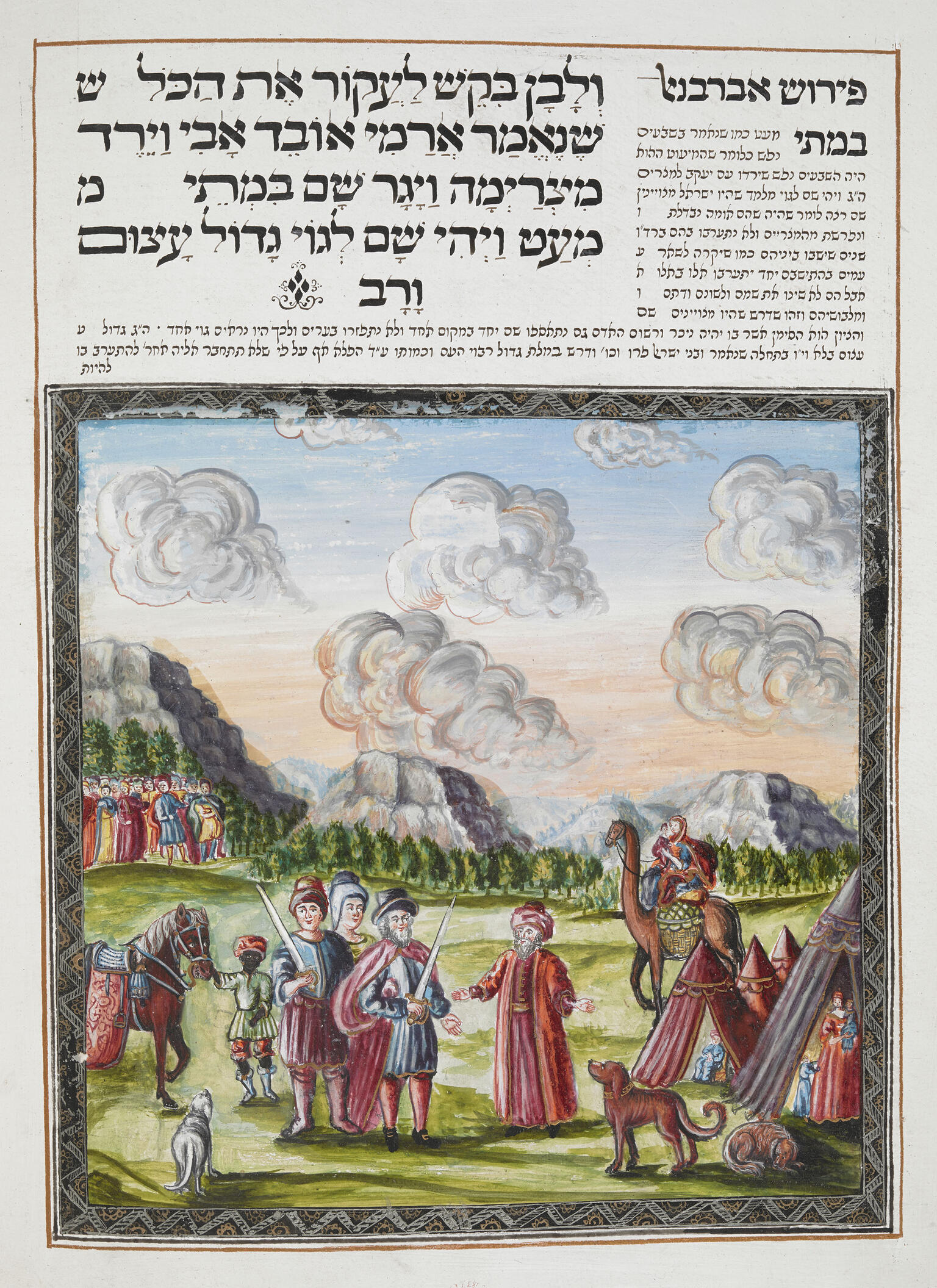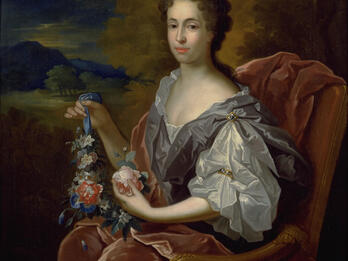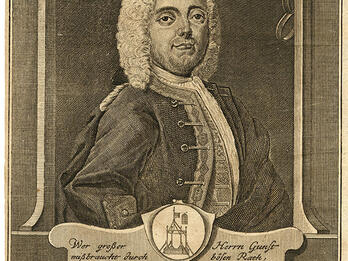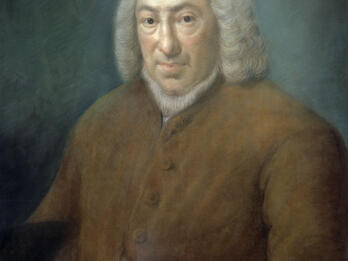Haggadah (Amsterdam)
Joseph Leipnik
1737
Image

Engage with this Source
Creator Bio
Joseph Leipnik
18th Century
The scribe and illustrator Joseph ben David came from Leipnik, in northeastern Moravia (now the Czech Republic) and lived in Frankfurt am Main, Darmstadt, Altona, and Hamburg. In the eighteenth century, Hebrew manuscript illustration experienced a revival in Germany and Central Europe. While he was neither the most prolific nor the most skilled artist of his time, Leipnik became a famous and influential scribe and illuminator, introducing new themes and using color in innovative ways. Fifteen of his manuscripts (one illustrated by another artist) have survived, dated between 1730 and 1740, among them fourteen Haggadahs. Some information about his life, including his patrons, can be gleaned from the colophons he added to his manuscripts. He probably supplemented his income by teaching children of rich families.
Related Guide
Jews on the Move: Early Modern Jewish Migration
1500–1750
The geography of Jewish settlement shifted dramatically in the sixteenth and seventeenth centuries.
Related Guide
Community, Congregation, and Self-Government
1500–1750
The early modern period witnessed flourishing Jewish self-governance across the diaspora, as economic utility to host nations enabled unprecedented communal autonomy.
Restricted
Image
Places:
Holy Roman Empire (Altona, Germany)
You may also like

Portrait of Leonore (Rachel) de Alvaro da Costa
Leonore (Rachel) de Alvaro da Costa (1669–1749), the second wife of Don Francisco Lopes Suasso, was descended from a wealthy Portuguese New Christian family who fled the Iberian Peninsula and settled…
Letter to the Envoy Keller
His princely Eminence has been pleased in his benevolence, while I am still confined to bed because of my illness to reveal to me sufficient to let me know that the matter has met with difficulties…

The Story of the Passing of Joseph Süss
Be it known that there was a man in Stuttgart in the state of Württemberg, who became ever greater in the stubbornness of his heart and his pride, in his wealth and his wisdom, and he was called…

Portrait of Jud Süss
Joseph ben Issachar Süsskind Oppenheimer (1698–1738) was a financier and court Jew who served as adviser to Duke Karl Alexander. Economic reforms enacted by Karl Alexander (and informed by Oppenheimer…
![17. [Image: S17 Wedding Poem for Jacob Teixeira and Sarah Ximenes] Hebrew text with floral border.](/system/files/styles/entry_card_sm_1x/private/images/vol05/Posen5_blackandwhite075_color.jpg?h=88dc55b7&itok=1uF59xUS)
Wedding Poem for Jacob Teixeira and Sarah Ximenes
Jacob Teixeira was born in Amsterdam in 1724 to Judith Nunes Henriques (b. Amsterdam, 1703–1732) and Joseph Teixeira (b. London, 1699–1775), who descended from the wealthy Portuguese Teixeira family…

Portrait of Alexander David of Braunschweig
Born in Halberstadt, northern Germany, Alexander David (1687–1765) served as Court Jew to Duke Anton Ulrich of Brunswick-Wolfenbuttel, providing the ducal court with luxury items as well as banking…


